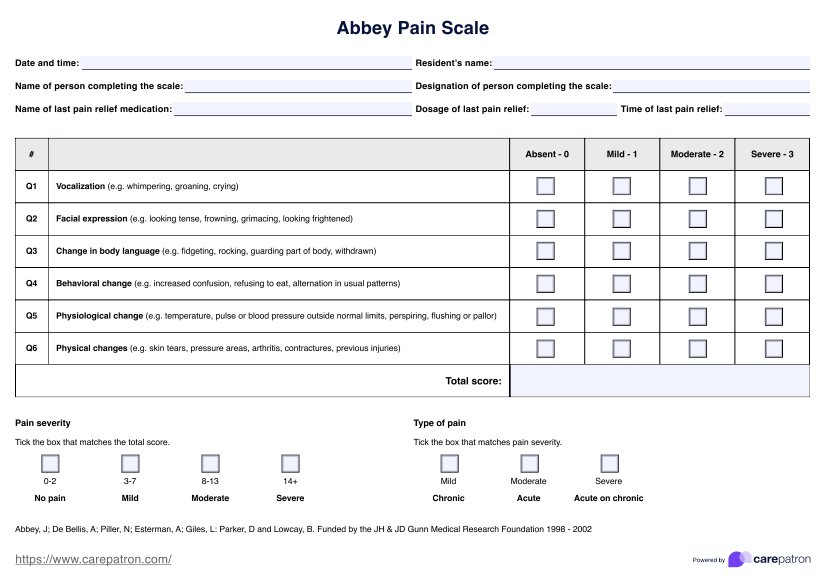Its popularity is due to the endorsement of the Australian Pain Society and its frequency of use in management strategies. It is specifically recommended for assessing pain in individuals who are unable to communicate their needs, such as those with dementia or cognitive impairments.

Abbey Pain Scale
Execute an effective pain management plan for your non-verbal patients with dementia. Determine their pain severity immediately using the Abbey Pain Scale.
Use Template
Abbey Pain Scale Template
Commonly asked questions
You score the Abbey Pain Scale by observing your patient's responses, reactions, or behaviors and scoring your observations with the corresponding values equivalent to a particular frequency or intensity in the empty boxes.
You can obtain the total Abbey Pain Scale score by adding all the values from Q1 to Q6.
Dr. Jennifer Abbey was the creator of the Abbey Pain Scale in 2018.
EHR and practice management software
Get started for free
*No credit card required
Free
$0/usd
Unlimited clients
Telehealth
1GB of storage
Client portal text
Automated billing and online payments











